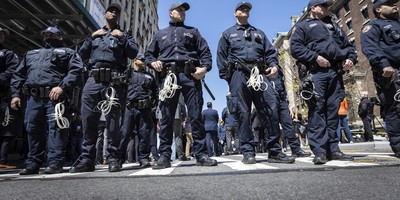In light of the “Fergusons” that have erupted in America over the last 50 years or so, it may come as quite a surprise to many of us to learn that from the 19th century clear through to roughly the middle of the 20th, most of those responsible for initiating “race” riots were white.
In 1829, Cincinnati, Ohio had a population of a little more than 2,000 blacks. Within the span of little more than a month, this population would be reduced by half as over 1,000 blacks fled the city as a result of the violence against their person and property initiated by whites—mostly Irish immigrants—who felt economically threatened by the presence of black laborers.
In 1841, another extended outburst of racially-inflamed violence occurred as mobs of whites, in response to a fight that had erupted the previous night between some Irish and black men, took to the streets with clubs in search of blacks to pummel. Black tenants of a boarding house and their neighbors were attacked in their homes.
The violence got worse, though, the next day. According to a witness at the time, when two young whites boys were badly harmed by knife-wielding black assailants, vengeful white men saw to it that blacks were “assaulted wherever” they were “found in the streets,” and they were assaulted “with such weapons and violence as to cause death.”
In 1863, in Detroit, whites (mostly Irish) spearheaded a rampage against the city’s black residents in response to the draft and the detention of a black man who was accused of having raped a white woman. They beat and stoned men and women—including women with small children—and set fire to black businesses and residences.
This same year, the Draft Riots erupted in New York City. To date, this three day conflagration holds the distinction of serving as our country’s largest “civil insurrection” of all time. Whites (again, primarily Irish) attacked the Mayor’s office, the New York Times building, police officers, fire fighters, white abolitionist women who had married black men and, of course, whatever blacks they could find.
Recommended
Black businesses, homes, and even a black orphanage were burned to the ground. One black man was fatally battered by hundreds of whites armed with clubs and paving stones. He was hung from a tree and his body set aflame. However, while he may have been the first, he certainly wasn’t the last, for at least 100 blacks were murdered from the 13th to the 16th of July during this fateful year. Some estimates place the number as high as 500 black victims claimed by the rioters. Thousands of people were injured.
The military was required to quell the unrest and reclaim control of the city. Many of those blacks who survived the riots fled Manhattan, reducing the black population of the city to its 1820 levels.
Time and space constraints preclude an exhaustive list of white race riots, but suffice it to say that our country’s history, up until the middle of the 20th century, is replete with them. Here are just a few:
In 1887, in Louisiana, a mob of whites attacked and killed between 20 to as many as 300 blacks—men, women, and children.
In 1917, in East St. Louis, a group of blacks killed two white police officers after having mistaken them for a carload of white men who had previously shot bullets into a black crowd. In retaliation, white men sought revenge. When it was all over, approximately 100 blacks were dead.
In 1919, in Chicago, a young black male was on a raft on Lake Michigan when he drifted into an area known to be frequented by whites. He was hit by a rock and drowned. When a police officer failed to arrest a suspect, the officer was attacked by blacks. Whites retaliated, pulling blacks off of trolley cars, pounding them with baseball bats and pieces of iron, and destroying black businesses. Some blacks fought back, but by the time the rioting had ended, more blacks (23) than whites (15) had been killed.
Many, many more incidences of white-on-black (and other white) riots could be cited.
The point of rehashing all of this, however, is not to engage in but another exercise of white guilt mongering. The point is threefold.
First, race riots are not synonymous with black riots. Historically, in America, there have been more white riots than there have been black riots, and in terms of sheer brutality, casualties, and brazenness, the former have made the latter look like temper tantrums.
Second, blacks are not naturally more (or less) violent than whites (or anyone else). The appalling amount of black violence that we witness today is a function of a cultural universe of values that is a relatively recent phenomenon, as far as history is measured.
Finally, and perhaps most importantly, this little history lesson is a desperately needed cautionary tale: Just because whites, or at least mobs of whites, are not, in this day and age, known for wreaking havoc upon blacks and their communities does not mean that such things can’t or won’t happen in the future. The past could repeat itself if a tipping point is reached, for just as there is nothing within the nature of blacks as blacks that accounts for their rioting, so there is nothing within the nature of whites as whites that explains why they haven’t rioted in many decades.
Violence against the persons and property of innocent human beings, no matter their race, is always wrong. But if this isn’t enough to deter those who are disposed to commit this evil from doing so, they would be well served to consider that violence just might eventually beget more violence.
When this happens, life becomes unpleasant for everyone.
























Join the conversation as a VIP Member